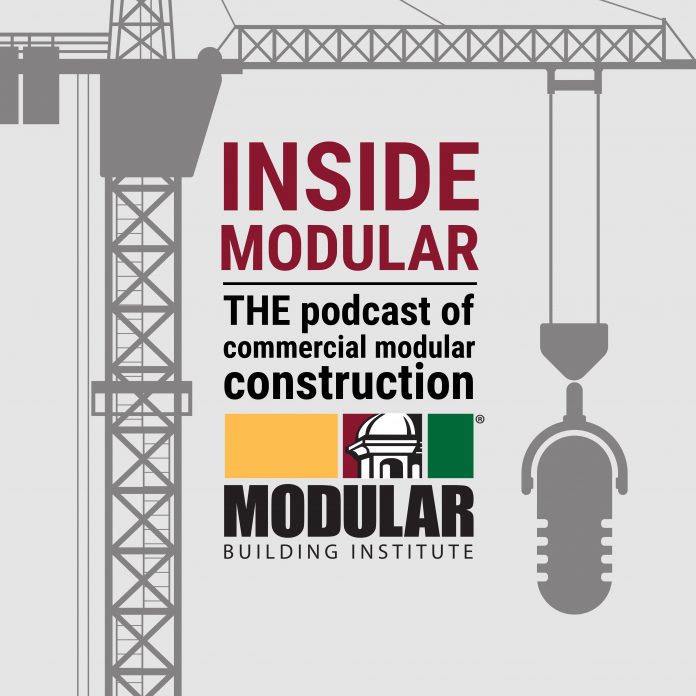In this episode of Inside Modular, Ken Puncerelli, CEO of LAI Design Group, discusses his experience with modular building project design, and offers helpful advice for developers who aren’t familiar with the modular construction process
Ken also talks about his upcoming presentation at MBI’s upcoming 2023 World of Modular and shares what attendees can expect.
The interview kicks off with Ken talking about his journey in the architecture and development industry. Ken started incorporating modular building into his portfolio in the early 2000s when he worked with modular manufacturer Guerdon Enterprises for a housing project in Gypsum, Colorado.
He explains his challenges on the project: “The biggest thing we had to wrap our brains around is okay, how big is a bedroom for example. Then how does that translate into a master ensuite? If you’re thinking about apartments, how does that width translate into a hallway and then to a mirror image apartment on the other side?
“Once you start wrapping your brain around the minimum and maximum as well as optimum width of a modular box, the maximum lengths for shipping and putting that box on a lowboy truck, then the world kind of becomes your oyster, then you can kind of wrap your brain.”
What don’t people understand about designing for modular construction? Is there something you find yourself repeating to clients about the process?
“I do, especially lately. As I told you, we started in around 2003 or 2004, we picked it up again in the next decade, and then it went away. We found in our shop that clients weren’t asking for modular after 2015.
“It kind of just evaporated in our office until about 2020, when the pandemic hit and because of that, I now think it’s here to stay. Whereas before, it was kind of ebb and flow because most people in the construction industry are late adopters. Something new and different is scary than how they’ve done it for 50 years.
“One thing with modular is that you must remember that it’s still construction. You’re not buying an Ikea bookshelf that’s perfectly pristine and without imperfections. This is still construction, and some things need to be resolved in the field from time to time that weren’t contemplated either in design, they were missed in the factory or a host of other things.
“You should have a healthy appreciation that about 60% of the construction of your new building is done in a factory, the other 40% is on site. As a result of that, the other biggest thing that I say is to make sure you have an experienced contractor build your project. I think that’s key because as design or construction professionals, we’re also psychologists. We have to be able to convey information, even bad news, and come up with solutions.”
You are planning to speak at MBI’s World of Modular about the fundamentals of modular building design. Can you tell me more about what attendees can expect?
“It’ll be high level at the session, but it’s important for the audience. Some are experienced modular developers, and others are trying to learn about it and get into it.
“One of the things that are important for people to understand, just like when you go through a planning and zoning submittal, there are multiple agencies within an application. The same is true for modular.
“It’s not just pulling a building permit with the local building official; the plans are actually submitted to the state engineer’s office for review. Additionally, there are third-party inspections that occur at the factory for compliance with codes. I always think, and sometimes this happens, and sometimes it doesn’t; I always think it’s a really good idea to meet with local building officials. Do a workshop with them, explain how the project works, and have your contractor there in attendance. It’s not only educational for a building official, but it’s also a good relationship builder for all because once you’re in the throes of construction, at least everybody’s been briefed on this.”
What’s next for LAI Group?
Ken concludes the interview by explaining what’s next for LAI Design Group.
“We’re looking at a student housing project in North Carolina that we did some conceptual design for about two years ago. Now it is actually coming to fruition with financing. So, we’re looking at that starting up here probably in the summertime.
“Then another student housing project for a university down in Louisiana that will also be modular. We’re doing a couple of townhome projects in Colorado. Workforce housing where speed to market is the key, along with acknowledging a very short construction season. We’re also looking at some hotel projects as well and Alabama.”
To learn more about the Inside Modular podcast, watch the full episode here.














